#emotional block
Text

#mentalheathawareness#mental health#depression#mood#anxiety#MH block#emotional block#the wall#owls#cartoon#whoever created this years ago THANK YOU
3 notes
·
View notes
Text
adrena lynn
Skin flaming to the touchBut she feels so cold insideThe cacophony is too muchWishing the noise would subsideHeart is beating too loudHair standing on endTired of this shroudAdrena LynnSit atop the point of purificationShe could destroyWith harbored inhibitions Crave the rush againSuspecting emptinessShe trembles for some reasonJust not the wayJust not the way she wants itThighs burn with rageShe…
#adrena lynn#adrenaline#burning passion#desire#emotional block#emotionality#fire#hot#internal disconnect#poem#poems#repression#sensuality
1 note
·
View note
Text
Writing Rage: How To Make Your Characters Seem Angry
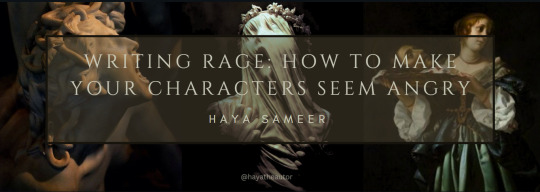
Anger is a powerful emotion that can add depth and intensity to your character's personality. If you're facing issues realistically expressing your characters' rage, here are some quick tips to help you get the ball rolling. Whether your character is seething with quiet rage or exploding in a fit of fury, these tips will help you convey their emotions vividly to your readers.
This is blog one in my writing different emotions series. Go check it out to explore more emotions!
Facial Expressions
Furrowed Brows: Describe the deep lines between their eyebrows, signaling frustration or intensity.
Tightened Jaw: Mention their clenched jaw, indicating suppressed anger or tension.
Narrowed Eyes: Highlight how their eyes narrow, showing suspicion, irritation, or anger.
Raised Upper Lip: Note the slight curl of the lip, suggesting disdain or contempt.
Flared Nostrils: Describe how their nostrils flare, indicating heightened emotions like anger or aggression.
Body Language and Gestures
Crossed Arms: Show their defensive stance, portraying resistance or defiance.
Pointing Finger: Describe them pointing accusatively, conveying aggression or assertion.
Fist Clenching: Mention their clenched fists, symbolizing anger or readiness for confrontation.
Hand Gestures: Detail specific hand movements like chopping motions, indicating frustration or emphasis.
Aggressive Posturing: Describe them leaning forward, invading personal space to intimidate or assert dominance.
Posture
Tense Shoulders: Highlight their raised or tense shoulders, indicating stress or readiness for conflict.
Upright Stance: Describe their rigid posture, showing control or a desire to appear strong.
Stiff Movements: Mention their jerky or abrupt movements, reflecting agitation or impatience.
Eye Contact
Intense Stares: Describe their intense or prolonged gaze, signaling confrontation or challenge.
Avoiding Eye Contact: Note how they avoid eye contact, suggesting discomfort or a desire to disengage.
Glaring: Mention how they glare at others, conveying hostility or disapproval.
Dialogue
Raised or strained tone with variations in pitch reflects heightened emotions.
Short, clipped sentences or abrupt pauses convey controlled anger.
Use of profanity or harsh language intensifies verbal expressions of anger.
Volume increase, from whispers to shouts, mirrors escalating anger levels.
Monotonous or sarcastic tone adds layers to angry dialogue.
Interruptions or talking over others signify impatience and frustration.
Aggressive verbal cues like "I can't believe..." or "How dare you..." express anger explicitly.
Reactions
Physical Reactions: Detail physical responses like increased heart rate, sweating, or trembling, showing emotional arousal.
Defensive Maneuvers: Describe how they react defensively if someone tries to touch or talk to them, such as stepping back or raising a hand to ward off contact.
Object Interaction
Aggressive Handling: Show them slamming objects, throwing things, or gripping items tightly, reflecting anger or aggression.
Use of Props: Mention how they use objects to emphasize their emotions, like slamming a door or clenching a pen.
Descriptive Words:
Verbs:
Roared with fury, expressing unbridled anger.
Snapped in frustration, indicating sudden irritation.
Shouted angrily, releasing pent-up emotions.
Glared fiercely, showing intense displeasure.
Slammed objects in rage, symbolizing anger's physical manifestation.
Grunted in annoyance, displaying impatience.
Raged vehemently, portraying uncontrolled anger.
Adjectives:
Furious and incensed, conveying intense anger.
Seething with rage, bubbling beneath the surface.
Livid and fuming, exhibiting visible anger.
Agitated and irritated, showing growing impatience.
Enraged and wrathful, expressing extreme anger.
Vexed and irate, indicating annoyance.
Infuriated and incandescent, highlighting explosive anger.
Looking For More Writing Tips And Tricks?
Are you an author looking for writing tips and tricks to better your manuscript? Or do you want to learn about how to get a literary agent, get published and properly market your book? Consider checking out the rest of Haya’s book blog where I post writing and publishing tips for authors every Monday and Thursday! And don’t forget to head over to my TikTok and Instagram profiles @hayatheauthor to learn more about my WIP and writing journey!
#hayatheauthor#haya's book blog#haya blogs#blog masterlist#writing community#writing tools#writer things#writing advice#writer community#writing techniques#writing prompt#writing stuff#creative writing#ya writing advice#writing tips and tricks#writer tools#writers of tumblr#writer blog#writers block#writers on tumblr#writerscommunity#writer stuff#author help#author advice#writing emotions#how to write emotions#emotional writing#writing#author
3K notes
·
View notes
Text
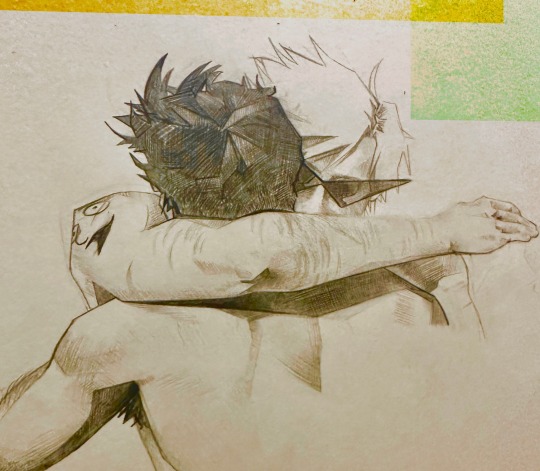
I got a crush on Mads Mikkelsen
#homestuck#homestuck fanart#hs fanart#dirk strider#dirkjake#jake english#blooby posting#Traditional art for a change#been art blocked. Trying to escape#Also going to try and do more intimate DirkJake fanart#I feel like I am always drawing them just standing or sitting or something#I need to practice emoting#etc. Ok#back to watching breaking bad
2K notes
·
View notes
Note
The part 2 of damian asking anya 's hand was so cute, thanks for taking my request
If u accept requests could u plz draw Loid secretly spying on Anya on her date with Damian seeing if he is a good bf or not
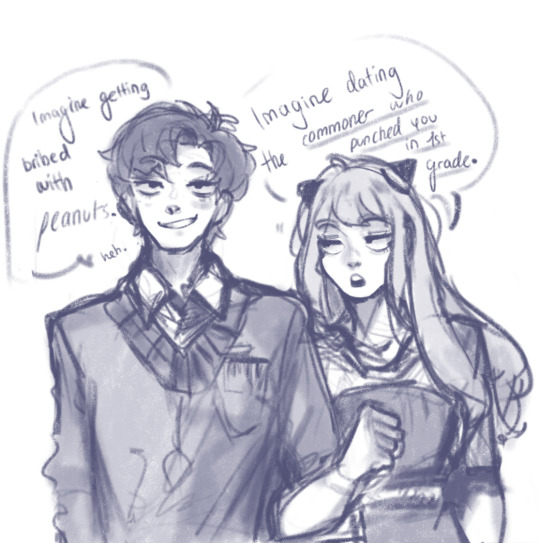


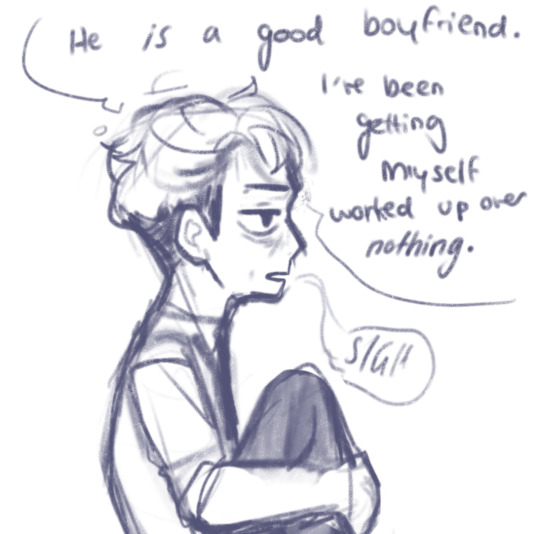


#i swear i wasnt planning on making this emotional#djdhdhd#loidy still sees her as his silly lil peanut girl who hates studying and wants a silenced pistol#over a decade has passed since then??? who cares????#loid forger#anya forger#damian desmond#damianya#spy x family#i've been having a very yucky art block. and im still not quite over it but im tryingggg#please bear with me other 2 requests#my art
4K notes
·
View notes
Text
NO MORE ASSOCIATING THINGS WITH FEMMES ONLY BECAUSE THEY ARE PINK!HYPERFEM FEMMES ARE GREAT AND I LOVE YOU CAMPY FEMMES WHO EMBODY PINK BUT ALSO JESUS CHRIST CAN YOU GUYS NOT GO MORE THAN ONE DAY W/O TRYING TO SHOEHORN FEMMES INTO BEING ONLY PINK UWU BABIES. I AM FEMME AS IN GRASS AS IN DIRT AS IN TREE BARK AS IN WEEDS SPROUTING THROUGH THE SIDEWALK CEMENT. FEMME AS IN GENDER NONCONFORMITY AS IN FUCK YOU MY FEMININITY IS WHAT *I* SAY IT IS. FEMME AS IN DEPTH AND DARKNESS AND WARMTH AND TERROR. FEMME AS IN CAVES. FEMME AS IN LIGHTNING. FEMME AS IN AN AMALGAMATION OF TRAITS THAT I HAVE DECIDED ARE FEMININE REGARDLESS OF WHAT SOCIETY SAYS. FUCK IS IT THAT HARD TO UNDERSTAND?!???
#personal#i am emotional yes#over the years ive had this blog I've made a few posts abt being femme#nd whether they're serious or jokey..... inevitably someone in the tags goes “ohhh yeah bc pink”#or in the case of what inspired this post: someone going “what about the pink ones” on my praying mantis post#and im just.#sick of it. im sick of femme being equated to pink and frilly girlie behaviors.#im sick of femme being equated to skirts and heels. to makeup. to skincare. to pristine nails exactly almond shaped.#im sick of ppl acting like All femmes aspire to this shit. im sick of femms being reduced to this shit.#and i love pink! i love pink! my phone theme is quite literally just black and pink all over.#im just. so tired of any expression of Femme identity being shoehorned into being a Specific type of femininity#especially as someone who DOES get dysphoric wearing skirts. wearing dresses. embodying the femme aesthetic yall are so set on making#if u guys wanna rb this i truly dont care#i just needed to scream#and this is one small thing#but the 2nd largest category of anon hate i have gotten since making this blog is str8 up homophobia from other “queer” folks#saying i cant be femme bc of how i present. calling me slurs (and using them as such) bc they cant understand femme as anything but that#my wife and i have our users in our personal discord server set as 2 different things of anon hate ive gotten#i have had OTHER FEMMES tell me i am not femme. femmes who Know im femme who still call me butch. femmes who ive corrected and been blocked#-by bc of it. the number 1 largest demographic of queerfolk who have me blocked rn is TME femmes who embody pink also#and i dont think its a coincidence at all. (and i know this bc i go to try and follow these ppl bc they get rbed on my dash & i cant)#and ik their blogs arent deleted bc some of them don't block my wife (tall. white. butch) and it cant be politics cause her and i rb#a lot of the same political shit (fuck. i think she rbs More than i do even. this is genuinely mainly a nsft blog)#and usually i don't say anything but im having a bad day so i get to be angry about this and if anyone fucking tries me i will block u#idc if we've been mutuals 4ever. im judt so tired of feeling like i am not Enough as a femme bc i dont embody this shit#im sick of this lameass lip service to he/him gnc femmes etc when the thin white 50s housewife femme is still what is preferred and loved#im sick of this lamesss lip service when y'all feel entitled to theorizing on other femmes genders bc u cant conceptualize a femme who does#wanna be hypetfeminine. im sick of it. im sick of it. im sick of it.#celebrity bun
411 notes
·
View notes
Text

CHUNSIK MY BELOVEDDDDDD
#im korean american and BRO#when i tell you that i was so fucking excited and happy#i actually cried bc i got emotional thinking about it all 😭#the language i hear everyday being shown to an international audience n shit :((( waaaahhh its so cool man#my culture as well :(( i was so fuckin happy (i shared so much random korean shit on my twt LOL)#i died when q said he had a surprise for acau and mentioned the eggs bro#like holy shit YES A KOREAN EGG 😭😭😭 ITS ALL I’VE EVER WANTED BRO#I USED TO PRAY 😭😭😭#i love chunsik sm he’s such a polite lil gentleman :(((#he dug tina n her horse out when she fell in a hole …#placed blocks when she missed a jump to a ladder …#and opened a fucking door for her 😭😭 he’s such a sweetheart#i love him sm u actually dont understand#anyway normal tags now LOL#qsmp#qsmp fanart#qsmp chunsik#chunsik fanart#chunsik the egg#qsmp korea#he is my everything 😭🫶#my art
614 notes
·
View notes
Text


"Grief? Then why do you force this false joy upon us? We are dancing on your brother's grave."
#the emotional impact and the many layers of how tragic this entire sequence is...delicious food#rodrigo burying juan is intercut with everyone being happy and celebrating lucrezia's betrothal...perfectly juxtaposing dark and light#& a moving OST matching grief-stricken rodrigo over pitting juan against his siblings & howling alone in the garden for causing this mess#while lucrezia &cesare were living in their own world fountain-dancing together in happiness as if they were celebrating#also the last time ceslu were truly happy: ces getting rid of the cardinal robes &lu celebrating paolo's avenging#juan's untimely fate. not getting closure & never having the chance to explain his piece is what makes the siblings' trio dynamics haunting#(well he kinda confessed to cesare anyway but it was too late & cesare wasn't planning to listen either way bc he needed to get it done)#anyway if any ceslu-er uses this post for the occasional juan bashing in my notifs it's an instant block not sawry lol#the borgias#cesare borgia#lucrezia borgia#perioddramaedit#romancegifs#dailyflicks#cinemapix#tvedit#tvarchive#perioddramasource#weloveperioddrama#by jen
298 notes
·
View notes
Text
"bpd is this" "bpd is that"
can i just say bpd is more than a favorite person? i understand that part as ive experienced it but thats not all there is
as someone who doesnt currently have a "fp" i hate that thats all bpd tumblr is. js shit about your feelings towards other people, i understand but oh my god i wish there was more. it feels like romanticism of the mental illness that people are gifted the option of assisted su!c!de for. and thats not fucking right.
im sorry if this sounds rude or anything but it just makes me feel really alone in my illness and thats a shitty feeling to have, esp as someone who has bpd.
#bpd feels#actually bpd#bpd#bpd vent#bpd thoughts#bpd problems#bpd safe#fp bpd#actually borderline#bpd splitting#borderline personality disorder#borderline thoughts#borderline culture is#borderline pd#borderline blog#living with borderline#romantizing life#block dont report#mental illness#actually mentally ill#mental health#mentally fucked#emotional health#bpd fp#fp#favorite person#alone with my thoughts#maybe mean?#im sorry#whatever
447 notes
·
View notes
Text
I don't think I realized how overstimulated and stressed out I get until I started wearing noise-canceling headphones pretty much 90% of the time and the special glasses I wear over the top of my RX glasses that filter my peripheral vision as well as provide extra light blocking.
Usually, I'm not even listening to anything on the headphones; I'm just filtering out the sounds of everything else. No more sound of traffic outside, no more low electrical humming that no one else seems able to hear. Just me and my thoughts, which are actually a lot more coherent when I'm not battling the noise of the world just to literally try and hear myself think.
It's nice.
#ADHD#adult adhd#reminded of that scene in elementary#where Sherlock wonders what his life would have been like if he'd been born in a quieter time#and yeah#yeah#that scene always hits home to me#but it's been hitting home a lot more since I started actively blocking out the world#and realizing how much physical and emotional distress it causes me
4K notes
·
View notes
Text

I was *not* longing, I swear.
[First] Prev <–-> Next
#poorly drawn mdzs#mdzs#wei wuxian#lan wangji#wen ning#If you have not listened to this scene in the audio drama I am *pleading* for you to#It's so funny. Oh my god the voice actors nail the part. Plus the music cutting out abruptly#Genuinely incredible comedic timing.#WWX voice: 'I was almost caught having an (unidentifiable ) emotion. How embarrassing. It will never happen again.' (lie)#wwx has unlocked: aesthetic attraction. He is now starting to develop emotional attachment.#This is a incompatible program with the current version of WWX. He requires an additional update#Please note that the actual countdown is *eight* seconds before passing out. My memory was fallible when I did my blocking#pd-mdzs lwj gets an extra 2 seconds. One for each bunny ear.#This comic kicked my ass a little. Normally I don't re-do comics unless its pertinent#but I struggled with getting this one 'just right enough'. And I'm happy with it! B*)
1K notes
·
View notes
Text
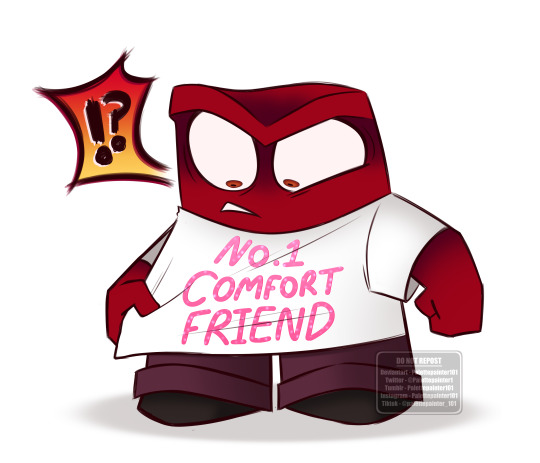
My take from Inside out 2
#No specific spoilers in the tags#But I went into this movie purely for Anger#He's my favourite of the emotions#And my GOODNESS WHAT A GUY#You dropped your crown king#Literally so many scenes of him had me smiling#Who knew in order to achieve peak character design you just had to give a tetris block a temper#Inside out 2#Anger#Inside out
359 notes
·
View notes
Text






#creative block#writer's block#artist block#repressed anger#repressed trauma#emotional release#emotional regulation#mental health awareness#mental health#women's mental health#feminine energy#self healing#healing#girlblogging#this is a girlblog#girlposting#girl blogger#girl blog aesthetic#twitter#divine feminine
365 notes
·
View notes
Text
How to Write Relatable Characters: A Writer’s Guide

Relatable characters are the lifeblood of any compelling story. They're the ones readers root for, cry with, and remember long after they've turned the last page. But what exactly makes a character relatable? Why do some characters feel like old friends, while others fall flat?
In this guide, I’ll walk you through the key elements that contribute to creating characters that resonate with readers on a personal level. From building a strong backstory to crafting authentic dialogue, this blog will equip you with the tools to create vivid, compelling, and believable characters that will captivate your readers and add depth to your narrative.
1. Understanding Relatability
Definition: What Makes a Character Relatable?
A relatable character is one that readers can connect with on a personal level. This connection might stem from shared experiences, emotions, values, or even flaws. Relatability is about creating a character who feels real—someone who could exist in the reader’s world, or even in their own life.
Importance: Why Relatable Characters Matter
Relatable characters are crucial because they engage the reader emotionally. When readers see a piece of themselves in a character, they become invested in that character’s journey. This investment is what drives readers to keep turning pages, eager to see how the character will overcome their challenges or achieve their goals.
Connection to Audience: How Relatability Creates Reader Engagement
Relatability bridges the gap between fiction and reality. When readers connect with a character, they experience the story on a deeper, more personal level. This connection makes the story more memorable and impactful, as readers are more likely to empathize with the character’s struggles and triumphs.
2. Building a Strong Backstory
Personal History: Adding Depth and Relatability
A well-crafted backstory is essential for creating depth in a character. It’s the foundation that shapes who they are, how they think, and how they react to the world around them. A character’s past experiences, upbringing, and the events that shaped their life provide context for their actions and decisions in the story.
Key Elements of a Backstory
Family and Upbringing: The influence of family, culture, and environment on the character’s development.
Past Traumas and Pivotal Events: Significant experiences that have left a lasting impact on the character.
Personal Motivations and Desires: The underlying drives that push the character forward.
Examples of Effective Backstories
Consider Harry Potter’s backstory: growing up as an orphan, mistreated by his aunt and uncle, and discovering he’s a wizard. This backstory not only explains his initial naivety and longing for acceptance but also makes his journey into the wizarding world all the more compelling.
3. Developing Flaws and Imperfections
Humanizing Characters Through Flaws
Perfect characters are boring. Flaws make characters human and relatable. They allow readers to see themselves in the character, imperfections and all. Flaws create tension and conflict, driving the character’s growth and development throughout the story.
Common Character Flaws
Insecurity: A character’s self-doubt can lead to relatable internal conflicts.
Fear: Whether it’s fear of failure, rejection, or the unknown, fear is a powerful motivator.
Pride: Excessive pride can lead to mistakes, making the character’s journey more complex.
Balancing Flaws with Strengths
While flaws are essential, it’s important to balance them with strengths to avoid making the character too unlikeable. A character’s strengths should complement their flaws, creating a well-rounded and realistic individual. For example, a character might be stubborn (a flaw) but also incredibly determined (a strength).
4. Creating Emotional Depth
Internal Conflicts and Emotional Complexity
Relatable characters often face internal struggles that mirror real-life emotions and dilemmas. These internal conflicts add layers to the character, making them more complex and interesting. Readers are drawn to characters who experience a range of emotions, from joy and love to anger and despair.
Techniques for Showing Emotional Journey
Dialogue: Use conversations to reveal a character’s feelings and thoughts.
Internal Monologue: Dive into the character’s mind to explore their inner turmoil.
Actions: Show emotions through the character’s reactions to situations.
Creating Reader Empathy
To create empathy, your character needs to be vulnerable. Show their fears, hopes, and insecurities. Let readers see the character at their lowest points, struggling to overcome challenges. This emotional journey is what will resonate with readers, making them feel invested in the character’s fate.
5. Crafting Authentic Dialogue
Realistic Speech Patterns
Authentic dialogue is crucial for making characters relatable. People don’t always speak in perfect sentences or with flawless grammar. They interrupt, hesitate, and sometimes say the wrong thing. Capturing these nuances in dialogue helps make your characters feel real.
Voice and Tone
Each character should have a unique voice that reflects their personality, background, and emotional state. A character’s tone can convey their attitude, whether they’re sarcastic, serious, or playful. Paying attention to how your characters speak can add depth and authenticity to their interactions.
Dialogue as a Window into Character
Dialogue is a powerful tool for revealing character traits, flaws, and emotions. For example, a character who speaks in short, clipped sentences might be guarded or angry, while one who rambles might be nervous or insecure. Use dialogue to show, rather than tell, what your characters are feeling and thinking.
6. Relating Through Common Experiences
Shared Struggles and Universal Experiences
One of the most effective ways to create relatable characters is by giving them experiences that resonate with readers. These can be universal struggles, such as dealing with loss, searching for identity, or falling in love. When readers see characters going through similar experiences, they’re more likely to connect with them.
Cultural and Social Touchpoints
Characters can also relate to readers through cultural references or social issues. This could be anything from navigating family traditions to dealing with societal expectations. Incorporating these elements into your character’s life can make them more relatable to readers from similar backgrounds.
Examples of Characters Relating Through Shared Experiences
Consider Elizabeth Bennet from Pride and Prejudice. Her experiences of navigating societal expectations and family pressures are relatable to readers, even centuries after the book was written. Her wit and independence make her a character that many can see themselves in, despite the historical setting.
7. Avoiding Stereotypes and Clichés
Unique Characterization
While some character traits may be common, it’s important to avoid reducing your characters to stereotypes or clichés. Stereotypes can make characters feel one-dimensional and unoriginal. Instead, aim to create characters with unique, multi-faceted personalities that go beyond surface-level traits.
Subverting Expectations
One way to avoid clichés is to subvert reader expectations. For example, instead of making the “tough” character emotionally distant, show their softer side. Or, instead of the “nerdy” character being socially awkward, make them confident and charismatic. Subverting these stereotypes can create more interesting and relatable characters.
Writing Diverse Characters with Authenticity
When writing characters from diverse backgrounds, it’s crucial to do so with respect and authenticity. Avoid relying on stereotypes and instead, research and understand the nuances of the culture, experiences, and perspectives you’re portraying. Diverse characters should be as complex and fully realized as any other character in your story.
8. Giving Characters Agency and Growth
Active vs. Passive Characters
Relatable characters are often those who take control of their own destinies. Active characters make decisions, face consequences, and drive the story forward. On the other hand, passive characters who simply react to events can feel less engaging and relatable.
Character Arcs
A well-developed character arc shows how a character changes over time. This growth can be in response to internal conflicts, external challenges, or both. A character who evolves in a believable way is more likely to resonate with readers.
Growth and Change
Show your character learning from their experiences, whether it’s overcoming a fear, letting go of pride, or learning to trust others. This growth makes characters more dynamic and relatable, as readers witness their journey from start to finish.
9. Testing Relatability: Beta Readers and Feedback
Beta Readers
Beta readers are an invaluable resource for testing the relatability of your characters. They can provide feedback on whether your characters feel authentic and engaging. They can also point out any areas where the character’s actions or dialogue might seem out of place or unrelatable.
Character Surveys
Consider creating character surveys or questionnaires for your beta readers. These can include questions about the character’s likability, believability, and relatability. The feedback you receive can help you refine your characters and ensure they resonate with your audience.
Revisions
Use the feedback from beta readers to make necessary revisions to your characters. This might involve tweaking dialogue, deepening backstory, or adjusting character arcs. Revising with a focus on enhancing relatability can significantly improve the impact of your story.
Looking For More Writing Tips And Tricks?
Are you an author looking for writing tips and tricks to better your manuscript? Or do you want to learn about how to get a literary agent, get published and properly market your book? Consider checking out the rest of Quillology with Haya Sameer; a blog dedicated to writing and publishing tips for authors! While you’re at it, don’t forget to head over to my TikTok and Instagram profiles @hayatheauthor to learn more about my WIP and writing journey!
#hayatheauthor#haya's book blog#haya blogs#writing community#quillology with haya#writing tools#writer things#writing advice#writer community#writing techniques#writing prompt#writing stuff#creative writing#ya writing advice#writing tips and tricks#writer tools#writers of tumblr#writer blog#writers block#quillology with haya sameer#writers on tumblr#writerscommunity#writer stuff#author help#author advice#emotional writing#author#writing inspiration#writeblr
534 notes
·
View notes
Text
sometimes the pattern repeats until you respond differently
#hj#I started to engage but then I just blocked#not worth my energy#I am not here to take on the emotional labour of random men from the internet#I am not I am not I am not
741 notes
·
View notes
Text

Ok, the brain is rotting HELP
#my art#art#proxi notice#sketch#fanart#portal 2#wheatly portal 2#portal 2 fanart#wheatly fanart#it has consumed my only braincell#that game is soooo goood#my sketchbook is now book ideas and portal fanart#the do hold the same emotional trauma tho#it somehow broke my art block#am very gratefull
310 notes
·
View notes